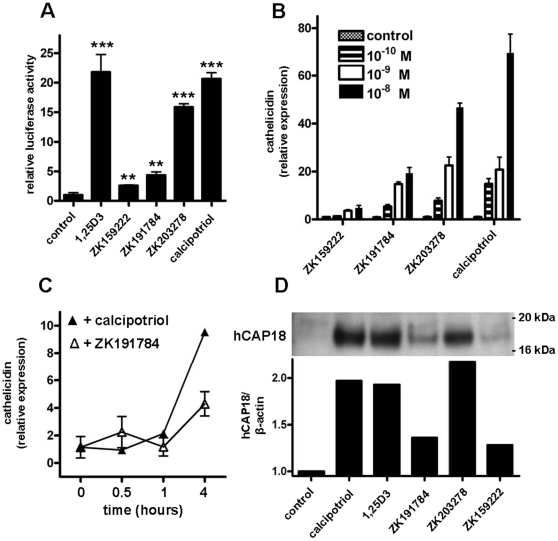Figure 3. Vitamin D analogs enhance cathelicidin promoter activity and induce expression in primary human epidermal keratinocytes.
(A) To analyze the effects of vitamin D analogs on the cathelicidin promoter a 5 kb fragment of the 5′ UTR of the cathelicidin gene CAMP was cloned into a luciferase reporter plasmid and transfected into HaCaT keratinocytes. Cells were stimulated with 1,25D3, ZK159222, ZK191784, ZK203278 and calcipotriol (all at 10−7 M) and luciferase activity was assayed (**P<0.01, ***P<0.001; Student's t test). In (B) primary human keratinocytes (NHEK) were stimulated with increasing concentrations of vitamin D analogs ZK159222, ZK191784, ZK203278 or calcipotriol (all: 10−10 M – 10−8 M). Cells were harvested after 24 h and cathelicidin transcript levels were analyzed by qPCR. (C) NHEK were stimulated with vitamin D analogs ZK191784 and calcipotriol (all at 10−8 M) for 0.5, 1 and 4 hours. Again, cathelicidin transcript abundance was analyzed by qPCR. All data are means±SD of a single experiment performed in triplicate and are representative of 2 to 3 independent experiments. (D) To evaluate cathelicidin peptide induction NHEK were treated with calcipotriol, 1,25D3, ZK191784, ZK203278 or ZK159222 (all at 10−8 M). Cathelicidin hCAP18 protein expression was analyzed in NHEK lysates by Western blot after 24 hours. Staining for β-actin served as loading control and hCAP18/β-actin ratios were analyzed using densitometry.

